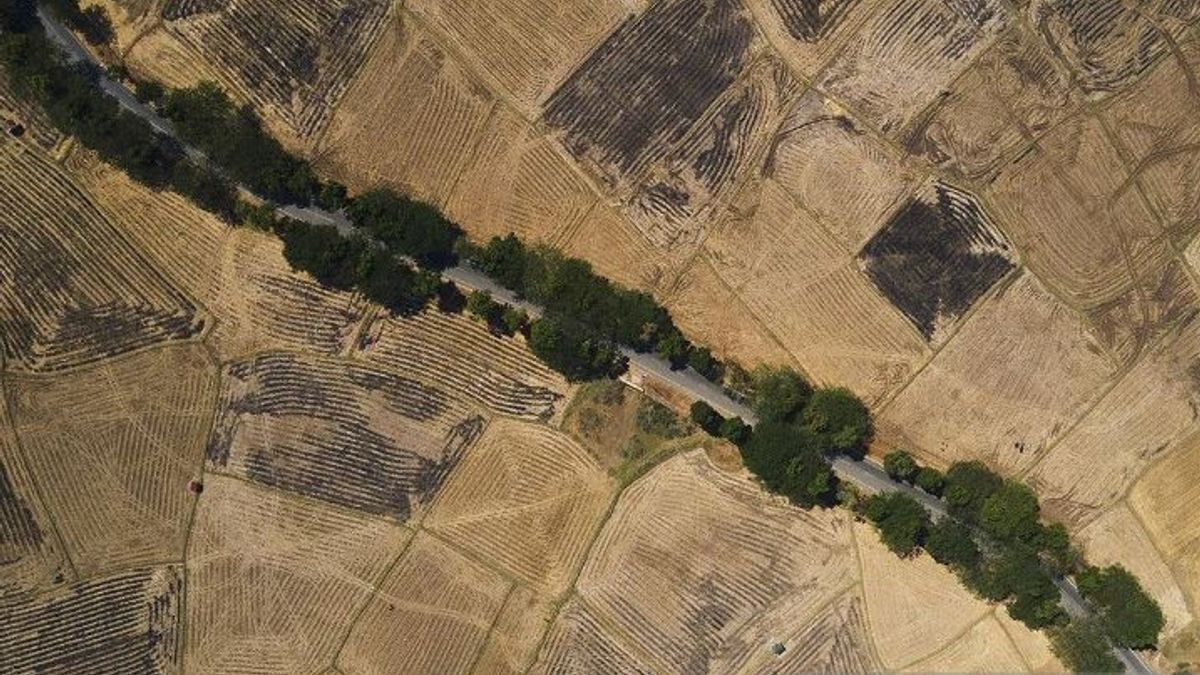JAKARTA The Meteorology, Climatology and Geophysics Agency (BMKG) predicts that Indonesia will experience La Nina after the end of the El Nino period. La Nina has the potential to increase the risk of extreme rain so that it is detrimental to agricultural land. What will happen to this year's rice price?
Head of BMKG Dwikorita Karnawati revealed that Indonesia will experience La Nina after the El Nino phenomenon which will soon become neutral in May-June. The end of El Nino caused sea level temperatures (SML) in the central Pacific Ocean to experience cooling or known as La Nina.
National Oceanic and Atmospheric Administration (NOAA) also explained that during the last few months El Nino weakened. The sea even became colder than the average temperature in February. This condition also adds confidence that La Nina will come soon. BMKG predicts La Nina will emerge from July 2024, but weaken in July-September.
"La Nina has the potential to become weak after the third quarter, namely July, August, September 2024," said Dwikorita.
Unlike El Nino, which has an impact on drought, La Nina makes Indonesia weaker. This is because rain will occur more often, causing other impacts such as flood risk, lower air temperature during the day, to many tropical storms.
The phenomenon of El Nino has seized the attention of the Indonesian people since the middle of last year. According to BMKG, El Nino shows an anomaly of sea surface temperature (SST) in the eastern and central Pacific Ocean equator which is hotter than normal, around 0.5 degrees Celsius or more. The impact of El Nino is reduced rainfall in Indonesia and temperatures that are hotter than usual.
La Nina is arguably the opposite of El Nino. La Nina is a temperature anomaly in the same region, but cooler than normal, about -0.5 degrees or more. For Indonesia, La Nina causes more frequent rain, causing flood risk, lower air temperature during the day, and more tropical storms.
SEE ALSO:
Meanwhile, quoted by Ocean Service, La Nina in Spanish means Little Girl. La Nina is also in some contexts sometimes called El Viejo or anti-El Nino or Cold Events.
During La Nina the waters off the Pacific Coast become colder and contain more nutrients than usual. Such an environment supports more marine life and attracts more cold water species such as squid and salmon to places such as California Beach.
Along with the announcement of predictions of the occurrence of La Nina, BMKG also revealed its impact on a number of sectors, including agriculture. The La Nina phenomenon which causes an increase in rainfall in various regions is believed to have an impact on food commodities. High rainfall can cause flooding that inundates agricultural land and damages crops, thus potentially causing large losses to farmers.
As is known together, last year's El Nino storm made rice and grain production decrease. The Central Statistics Agency (BPS) even noted that rice production and harvest area continued to shrink, which means productivity decreased. This had disrupted domestic fulfillment, forcing Indonesia to import rice in the amount of rice.
According to BPS records, rice is one of the largest imported commodities in 2023 which has reached 3.06 million tons. Whereas in the previous four consecutive years, Indonesia's rice imports did not even reach half a million tons.
El Nino is believed to have played a role in the recent skyrocketing price of rice. The price of local premium rice in the traditional market even broke the figure of Rp. 19,000 per kg, based on the meeting of Trade Minister Zulkifli Hasan at the Kramat Jati market, East Jakarta in mid-March.
It is not impossible, the price of basic commodities also continues to creep due to the La Nina phenomenon. Even though Indonesia itself is still trying to stabilize rice prices following the decline in yields due to El Nino. Therefore, the potential for La Nina is believed to have an impact on the agricultural sector, especially holticulture products.
"For rice, it might be better, but if the rainfall is abundant, it will certainly have an impact," said BMKG Climate Variability Analysis Coordinator Supari.
This is in line with the opinion expressed by the Agricultural Observer of the Center of Reform on Economic (CORE) Eliza Mardian. He said that the presence of La Nina will certainly return to the food sector, especially holticulture products such as chilies, shallots, and tomatoes.
"This plant can't stand puddles and will rot easily, and develop disease to crop failure," said Eliza.
BMKG has also warned the agricultural sector to be aware of the La Nina phenomenon because it will trigger wetter conditions than normal conditions. The increasing risk of extreme rain is also directly proportional to the potential loss in the agricultural sector. Starting from flooded land, the potential for pests and plant disease to grow.
In addition to the risk of crop failure, flooding can also make food distribution tend to be disrupted because roads affected by flooding cannot be accessed. As a result, shipments were disrupted and could even be delayed due to flooding. The lack of delivery makes stock in the market decrease so that traders sell at high prices. As a result, the prices of various foods will rise.
The English, Chinese, Japanese, Arabic, and French versions are automatically generated by the AI. So there may still be inaccuracies in translating, please always see Indonesian as our main language. (system supported by DigitalSiber.id)














